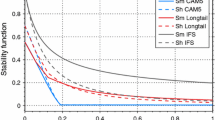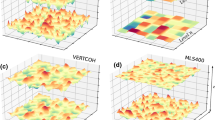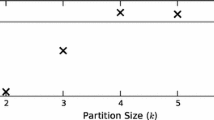Abstract.
Atmospheric general circulation models (GCMs) are characterized by many features but especially by: (1) the manner of discretizing the governing equations and of representing the variables involved at a given resolution, and (2) the manner of parameterizing unresolved physical processes in terms of those resolved variables. These two aspects of model formulation are not independent and it is difficult to untangle their intertwined effects when assessing model performance. The attempt here is to separate these aspects of GCM behaviour and to ask, “Given a perfect parameterization of the physical processes in a model, what resolution is needed to capture the dominant dynamical aspects of the atmospheric climate?” Alternatively, “At what resolution do the dynamics of a GCM converge”? The perfect parameterization approach assumes that the calculation of the physical terms returns the “correct” result at all resolutions. In the idealized case, a time-independent forcing is one of the simplest that satisfies this condition. However, experiments show that it is difficult for the dynamics of a GCM to balance a time-independent forcing with atmosphere-like flows and structures. The model requires, and the atmosphere presumably includes, physical feedback mechanisms which act so as to maintain the kinds of flows and structures that are observed. Resolution experiments are performed with a simplified forcing function for the thermodynamic equation which combines a dominant time-independent specified forcing with a weak linear relaxation feedback. These experiments show that the dynamics of the GCM have essentially converged at T32 and certainly by T63 which is the next resolution considered. This is shown by the constancy of structures, variances, covariances, transports and energy budgets with increasing resolution. Experiments with an alternative forcing proposed by Held and Suarez, which has the form of a linear relaxation, show somewhat less evidence of convergence at these resolutions. In both cases the “physics” are known by assumption. However, the form and nature of the forcing is different, as is the behaviour with resolution. The implication for the real system is that the resolution required for simulating the dynamical aspects of climate is rather modest. The simulated climate does, however, apparently depend on the ability to correctly and consistently parameterize the physical processes in a GCM, involving both forcing and feedback mechanisms, as a function of resolution.
Similar content being viewed by others
Author information
Authors and Affiliations
Additional information
Received 19 January 1996/Accepted 22 August 1996
Rights and permissions
About this article
Cite this article
Boer, G., Denis, B. Numerical convergence of the dynamics of a GCM. Climate Dynamics 13, 359–374 (1997). https://doi.org/10.1007/s003820050171
Issue Date:
DOI: https://doi.org/10.1007/s003820050171




